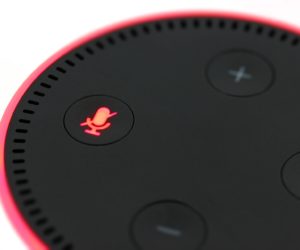The world is moving. And we are moving also. And while we’re moving, we want to stay connected with …? Yes, this is one good question: we want to stay connected with all our friends, with all the news around us, with our smart home, with our car, with our pet, etc…In order to achieve such requirements, the technology should move also with us. But some new questions are to be answered: do we have the appropriate support for this, do we have the ability to use the maximum capacity of that support, and do we have the tools to test such solutions?Well, too many questions, and now is time to provide also some answers. And since we’re trying to prove that FPGAs (Field Programmable Gate Array) are nice devices, engineer’s best friends, we will focus our attention in this direction. Although we know that digital processing can be made also in DSPs (Digital Signal Processors) for example, the goal of this paper is to briefly highlight the advantages the FPGA usage can bring: they can be as big as you need, they can be as fast as you need and you can go until putting your binary on the FPGA and executing real-time debugging procedures using a single software package.So coming back to our questions, the first answer is that YES, the support for our applications is extending its capabilities once with the requests:- we can find in same SoC (System On Chip) an LTE/ Dual Mode (3G and HSPA) small cell baseband processor (MAC & PHY) supporting LTE FDD 20 MHz channel with MIMO 2×2 or 4×4 (Transcede series from MindSpeed, Zynq from Xilinx)- we are waiting for new FPGAs on 16 nm technology (Xilinx with TSMC in FinFast project). FAST- we can use now more FPGA die slices in the same package (SSI technology from Xilinx) for superior system integration and ultra-high capacity. BIG- we can also select one FPGA based on our demands, keeping the family but scaling the available resources or selecting the most appropriate family. SCALABLE So either as final target, or as an intermediate step in ASIC (Application-Specific Integrated Circuit) design, FPGAs are providing now all the support the latest applications may require.And about the ability to use this enhanced support in real applications, the answer is again YES. There are domains like Wireless Communications (Baseband, Connectivity, Radio, and Backhaul), Automotive, Medical, Defense and Aerospace requesting more and more improved skills for software design, hardware design, RF design. And there are engineers covering better and better these tasks.And even though there is a certain gap between the ability of producing FPGA and the ability of programming them, respectively between the ability of programming and the ability of testing, also for the last part of our question the answer would be YES. The testing procedures were improved and adapted to the current needs:- new languages like SystemC were used for hardware description (with specific synthesis tools)- dedicated testing procedures (ABV – assertion based verification, FC – functional coverage, TA – test bench automation) were introducedThe conclusion is that FPGAs can be an excellent choice either your application is very simple or very complex, with a pure hardware description or with a mixed hardware/ software approach, in no matter what kind of domain.FPGAs were nice and trendy in the past, but now they are really cool. So walk on the red carpet in the spotlights and start your FPGA-based project with Pentalog because we can do it for you.








